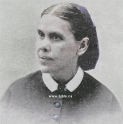

This material regarding the writings of Ellen G. White is part of a Field Guide profile on
Seventh-
The details of Seventh-
In some instances, the copying consisted of following the exact flow of ideas and examples, in others it was loose paraphrases of short or long sections. But in many, many other instances it consisted of phrases, sentences and passages taken word from word from the writings of others without any indication that such material was not her own writing.
In all of these instances, Ellen G White most assuredly presented the material as being straight from her own pen, without even any "influence" from other writers, let alone direct copying from them. And in many instances, she even prefaced material directly plagiarized from others with words such as "I was shown," or "I saw," or "It was presented to me," which were specifically indicating that she was claiming the material to be directly, divinely "revealed" to her straight from Heaven.
This short overview of the matter of her plagiarism offers only a tiny bit of background material to this huge issue. For those who would like to examine the voluminous proof of the plagiarism allegations, see the links at the end of this article.
Excuses?
The most frequent excuse heard among Adventists regarding the plagiarism of Ellen G White is that it was "common" for authors in the 1800s to use the writings of others without any citation as to the source. And it is further often argued that Ellen and other SDA leaders were just "naïve" and didn't understand the importance of giving credit to those whose creative ideas … and often, exact words … she used and attributed to herself and to the inspiration of God.
Is this true? Were the early adventists, including Ellen G White just "ignorant" of the importance of the issue of plagiarism? Was plagiarism "no big deal" in the 1800s?
Ronald Numbers, author of a book about EGW titled Prophetess of Health, noted the truth about this matter in an article in the Adventist Spectrum Magazine, January 1977:
In a note on "plagiarism" in the September 6, 1864 issue of the Review and Herald, the editors accuse a woman named Luther B. Weaver of stealing lines from one of Annie Smith’s poems and publishing them as her own. Plagiarism, they say, "is a word that is used to signify 'literary theft,' or the taking the productions of another and passing them off as one’s own. . . . We are perfectly willing that pieces from the Review, or any of our books should be published to any extent, and all we ask is, that simple justice be done us, by due credit being given."
This is the same Review and Herald, official publishers of the SDA denomination, that published and distributed the writings of Ellen G White from the earliest days of the Adventist movement.
Overview of the plagiarism evidence
The quotations in indented sections below are all from Asmund Kaspersen's small book
Ellen G. White -
In the official Seventh-
"Sister White is not the originator of these books. They contain the instruction
that during her life-
Kaspersen, a former loyal SDA member notes regarding this statement:
This is not quite true, at least not the way she depicts it. The cold, bare facts stand against her as witnesses. However, it can be said to be a true statement if we see it this way: Sister White is not the originator of these books because most of them consist of plagiarized material from other authors. But that was of course not what she intended to say in the above statement.
One of "these books" that EGW was referring to was her major volume titled The Great Controversy. About this book, she wrote:
"While writing the manuscript of The Great Controversy, I was often conscious of the presence of the angels of God. And many times the scenes about which I was writing were presented to me anew in visions of the night, so that they were fresh and vivid in my mind." (Letter 56, 1911; Colporteur Ministry, p. 128. Emphasis supplied.)
Was this so? Did she really receive the substance and details of the scenes she described in the book from "visions of the night"? SDA members have believed this for over 100 years. But evidence which has come to light in the past thirty years has made it abundantly clear that most of the book was pieced together directly from the writings of earlier authors.
Says Kaspersen:
We are now being able to draw the following conclusions about the book The Great Controversy by Ellen G. White,
1. The book contains the heart of the SDA faith system.
2. Very little of the material in the book is original with Ellen White. Investigation has been showing that the book is made up by material from at least 88 different authors.
3. The book was published in three editions: 1884, 1888, 1911. The 1884-
4. The 1888-
5. Entire chapters in the book are from other authors.
6. Historical errors these authors had been doing, were copied straight into The Great Controversy. This should refute the claim some are making, that "God showed Ellen White what to copy, and what to leave out".
7. The theology in the book, and accordingly the central doctrines of the Seventh-
SDA historian Donald Adams was forced to admit after reviewing the evidence:
"What we find when we examine the historical portions of the Great Controversy
(those events from the fall of Jerusalem in 70 A.D. through the French Revolution)
is that entire chapters at a time are simply selective abridgments of protestant
historians. . . . In the samples I have examined there is not one historical fact
in her text that is not in their text." (Donald McAdams, Ellen G. White and the Protestant
Historians. Unpublished Manuscript, p. 16-
"The hand-
Documented examples from Walter Rea's book The White Lie regarding the sources of material in The Great Controversy give absolutely no room for any question that White plagiarized earlier writers word for word over and over, claiming divine inspiration for what was ungodly deception.
What about the beloved Desire of Ages book?
Writes Kaspersen:
In 1980, the SDA denomination asked Dr. Fred Veltman, who at that time was head of the departement of religion at Pacific Union College, to analyze the charges of plagiarism Walter T. Rea and others had been making against Ellen White. Dr. Veltman researched the matter for eight years, at an expense of some 500,000 dollars, and the results of his research was published in Ministry magazine (November 1990). The conclusions were amazing!
"It is of first importance to note that Ellen White herself, not her literary assistants, composed the basic content of the Desire of Ages text. In doing so she was the one who took literary expressions [copied] from the works of other authors without giving them credit as her sources [plagiarism]. Second, it should be recognized that Ellen White used the writings of others consciously and intentionally. ... Implicitly or explicitly, Ellen White and others speaking on her behalf did not admit to and even denied literary dependency [copying] on her part.
"I must admit at the start that in my judgment this is the most serious problem to be faced in connection with Ellen White's literary dependence [copying]. It strikes at the heart of her honesty, her integrity, and therefore her trustworthiness. The content of Ellen White's commentary on the life and ministry of Christ, The Desire of Ages, is for the most part derived [copied] rather than original. . . .
"In practical terms, this conclusion declares that one is not able to recognize
in Ellen White's writings on the life of Christ any general category of content or
catalog of ideas that is unique to her." (Fred Veltman, Ministry, Nov. 1990, pp.
11-
What about the Acts of the Apostles book?
Regarding this EGW book, Kaspersen writes:
In 1883 the Adventist denomination published a book entitled Sketches from the Life of Paul, by Ellen G. White. Problems arose almost from the start, when the striking similarities between Ellen's new book and the book The Life and Epistles of St. Paul by the British authors W.J. Conybeare and J.S. Howson (1852) were being discovered. In fact, the similarities were so striking that Conybeare and Howson threatened the Adventist denomination with lawsuit if the book was not withdrawn. After several denials, as usual, Sketches was eventually withdrawn.
But in the introduction to Sketches, the SDA publishers wrote:
"The writer of this book, having received special help from the Spirit of God, is able to throw light upon the teachings of Paul and their application to our own time, as no other authors are prepared to do. She has not suffered herself to be drawn aside to discuss theories, or to indulge in speculation. No extraneous matter is introduced. Consequently much that is contained in other books, which is interesting to the curious, and has a certain value, but which is after all little more than theory, finds no place in this work." (Life Sketches From the Life of Paul, introduction. Emphasis supplied.)
This was quite a statement, but far from any truth.
Of course one could argue that Ellen White did not write the introduction herself. This could be true. However, it has always been claimed that she had the final word in the publication of her writings, and that she always read carefully through the manuscript before it was sent to the publishing house for printing. On account of that, there is good reason to believe that either she endorsed the introduction to Sketches, or she did not. Because the book was published under her name, we will take for granted that she endorsed it.
It is an undisputable fact that great proportions of Sketches had been "borrowed" from Conybeare and Howson's work, and doctored the usual way by Ellen Whites "borrowing staff" before going to press. In spite of this, the introduction claims in plain words that no external material had been used!
"The truth is that Ellen had used the other author's material from beginning
to end with little let-
During the 1919 Bible Conference, Arthur G. Daniells commented on this,
"A. G. Daniells: Yes; and now take that "Life of Paul," -
But obviously she did not learn from this incident. Both she and her assistants continued as if nothing had happened, in fact they borrowed more heavily than ever! [End of Kaspersen quote]
A.G. Daniells above indicates that the "poor sister" claimed to just "not know about quotations and credits." This is utter nonsense, as can be seen by the following comments by Kaspersen about another incident in which someone else wanted to use the writings of EGW:
There is much evidence to the claim that Ellen G. White was one of the most prolific, literary kleptomaniacs in history. However, she was very attentive that others gave her due credit if they would quote her in their own books. When Dr. David Paulson asked her for permission to make use of some of her material in his monthly magazine The Life Boat, W.C. White replied,
"Mother instructs me to say to you that you may be free to select from her
writings short articles for The Life-
The evidence of plagiarism in more and more of EGW's writings mounts as the years go by. Some researchers have seriously wondered if much of anything the woman wrote represented her own thoughts, let alone "inspired" revelations from God Himself. Extensive amounts of material from other uncredited writers have been discovered in her health writings. Samples:
(Larkin B. Coles, d. 1856, was a follower of William Miller)
"It is as truly a sin against Heaven, to violate a law of life, as to break one of the ten commandments" (Larkin B. Coles, Philosophy of Health (1853), p. 215).
"It is as truly a sin to violate the laws of our being as it is to break the ten commandments. To do either is to break God's laws." (EGW, Christian Temperance (1890), p. 53.)
"The sympathy existing between the mind and the body is so great, that when one is affected, both are affected" (Larkin B. Coles, Philosophy of Health (1853), p. 127).
"The sympathy which exists between the mind and the body is very great. When one is affected, the other responds." (EGW, Testimonies, vol 4, p. 60 (1876).)
"Flesh eating is certainly not necessary to health or strength. . . .If it be
used, it must be a matter of fancy. . . .When we increase the proportion of our animal
nature, we suppress the intellectual. . . .The use of flesh tends to create a grossness
of body and spirit" (Larkin B. Coles: Philosophy of Health, (1853), p. 64-
". . .flesh meat is not necessary for health or strength. If used it is because a depraved appetite craves it. When the animal propensities are increased, the intellectual and moral powers are decreased. The use of the flesh of animals tends to cause a grossness of body and benumbs the fine sensibilities of the mind." (EGW, Testimonies, vol 2, p. 63 (1868).)
The examples above are pulled from a chart of examples of Ellen’s plagiarisms based on the content of Prophetess of Health: A Study of Ellen G. White by Dr. Ronald Numbers.
There are many more incidents of plagiarism documented in some of the "testimonies" to ministers and others, various articles published in the denomination's magazine, and from all of her major books.
Specific details on a number of incidents of plagiarism throughout the writings of EGW can be seen in the sections of Walter Rea's White Lie book that are posted on the Internet.
For those who would like to investigate this matter in greater detail, click here to go to the Bibliography and Documentation sections at the end of the main profile of the SDA movement on this Field Guide website.
Unless otherwise noted, all original material on this Field Guide website
is © 2001-
Careful effort has been made to give credit as clearly as possible to any specific material quoted or ideas extensively adapted from any one resource. Corrections and clarifications regarding citations for any source material are welcome, and will be promptly added to any sections which are found to be inadequately documented as to source.

Plagiarism
In the Writings of Ellen G White